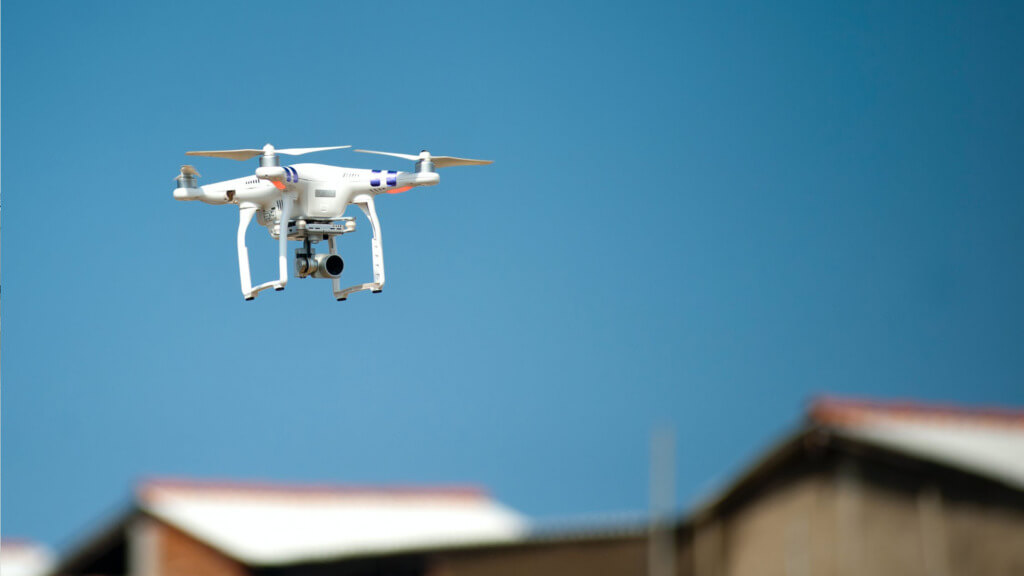10 technology trends to keep an eye on during the COVID-19 pandemic
2021 was a year of disruption

Amid the COVID-19 epidemic, technology plays a critical role in keeping our civilization functional throughout lockdowns and quarantines. These technologies may have a long-term influence in addition to COVID-19.
Table Of Content
- 1. Robotic Delivery and Online Shopping
- 2. Contactless and digital payments
- 3. Working remotely
- 4. Distance learning
- 5. Telehealth
- 6. Online entertainment
- 7. Supply Chain 4.0
- 8. 3D printing
- 9. Drones and Robotics
- 10. Information and Communication Technology (ICT) and 5G
- The significance of being digitally ready
Here are ten technological trends that can help us construct a more resilient society and how they will affect how we do business, trade, work, manufacture things, study, seek medical care, and enjoy ourselves.
1. Robotic Delivery and Online Shopping
The SARS pandemic in late 2002 sparked a massive increase in both business-to-business and business-to-consumer online marketplace platforms in China.
COVID-19, meanwhile, has elevated internet purchasing from a nice-to-have to a need all over the world. Even through online ordering and delivery, several Beijing pubs have maintained to provide happy hours.
A reliable logistics infrastructure is required to enable online purchasing. Viruses are not immune to in-person delivery. In the United States and China, several delivery firms and restaurants are offering contactless delivery services. Products are picked up and dropped off at a predetermined location rather than from or into the hands of a human. E-commerce behemoths in China are likewise accelerating the development of robot delivery. However, before robot delivery systems become widely used, delivery businesses must develop clear standards to ensure that items are delivered in a hygienic state.
2. Contactless and digital payments

Because cash might contain the virus, central banks in China, the United States, and South Korea have guaranteed banknotes are virus-free before they enter circulation. In addition, to avoid the spread of COVID-19, contactless digital payments, such as cards or e-wallets, are now the preferred payment option. As a result, people may use digital payments to make online purchases and payments for goods, services, and even energy bills and get stimulus funds more quickly.
According to the World Bank, more than 1.7 billion individuals are unbanked, meaning they do not have simple access to digital payments. Digital payments rely on the availability of the internet, devices, and a network to transform currency into a digital version.
3. Working remotely
Employees at several firms have been urged to work from home. Virtual private networks (VPNs), virtual meetings, cloud technology, voice over internet protocols (VoIP), work collaboration tools, and even facial recognition technologies that allow a person to appear in front of a virtual background to maintain home privacy are all technologies that enable remote work. Remote work not only prevents the transmission of infections but also saves time and gives you more freedom.
Employers and employees, however, face problems as a result of remote employment. Recent class actions against Zoom have demonstrated that data security, privacy, and prompt tech assistance may be significant concerns. Remote employment can also make it more challenging to comply with labor laws, such as ensuring a safe working environment and income tax concerns. Employees may feel lonely and have a difficult time balancing their professional and personal lives. Employers may seek to minimize leasing expenses and hire workers from locations with lower labor costs if remote work becomes more prevalent during the COVID-19 epidemic.
To accommodate remote work, laws and regulations must be changed, and more psychological research must be performed to understand the impact of remote work on individuals.
Furthermore, not all tasks can be done from home, resulting in inequity. According to the US Bureau of Labor Statistics, from 2017 to 2018, over 25% of salaried workers worked from home at least occasionally. Compared to those with only a high school diploma, workers with a college degree are at least five times more likely to have employment that allows them to work from home. Medical services and manufacturing, for example, may not have the choice at all. If the amount of cross-border digital services increases considerably, data transfer and taxation policies will need to be changed.
4. Distance learning
One hundred ninety-one nations had declared or implemented school or university closures in mid-April, affecting 1.57 billion pupils. To guarantee those quarantine restrictions did not hinder education, several educational institutions began providing courses online. Virtual reality, augmented reality, 3D printing, and artificial-intelligence-enabled robot teachers are among the technologies used in distant learning, comparable to those used in remote working.
Concerns about remote learning include the risk that the technologies may widen the digital gap between people of different income levels. Distance learning may also put a financial strain on parents, particularly women, who must stay at home to care for their children and may experience reduced productivity at work.
5. Telehealth

While providing crucial primary care, telehealth can be an efficient approach to control the development of COVID-19. Wearable IoT devices can monitor vital indicators. For example, patients can use chatbots to make an early diagnosis based on their symptoms.
However, it is critical to guarantee that telehealth is covered by insurance in nations with high medical expenses. Telehealth also needs a certain amount of technical proficiency as well as a stable internet connection to function. Doctors may generally only give medical care to people in the same jurisdiction since medical services are one of the most tightly regulated industries. Regulations may not have anticipated a future where telehealth would be available at the time they were enacted.
6. Online entertainment
Even though quarantine precautions have drastically limited in-person contact, human ingenuity has moved the party online. Cloud parties and internet concert streaming are gaining popularity across the world. Films from Chinese production firms have also been made available online. Virtual tours are available at museums and world heritage sites. Since the outbreak, there has also been an increase in online gaming traffic.
7. Supply Chain 4.0
The COVID-19 epidemic has disrupted the worldwide supply chain. Some factories have been shut down altogether due to quarantine and distance measures. While demand for food and personal protective equipment is increasing, several nations have imposed various export restrictions on those products. Moreover, the present supply chain system is vulnerable to any pandemic due to its heavy dependence on paper-based records, lack of data visibility, and variety and adaptability.
By improving data accuracy and promoting data exchange, the Fourth Industrial Revolution core technologies such as Big Data, cloud computing, Internet-of-Things (IoT), and blockchain are helping to construct a more robust supply chain management system for the future.
8. 3D printing
3D printing technology has helped alleviate supply chain disruptions and export prohibitions on personal protective equipment. In addition, 3D printing allows for production flexibility: the same printer can manufacture various goods using multiple design files and materials, and essential parts may be made rapidly on-site without the need for a lengthy procurement procedure or a long wait for shipping.
However, there are a couple of challenges to large production utilizing 3D printing. To begin with, manufacturing patent-protected parts might raise intellectual property concerns. Second, specific products, such as surgical masks, require regulatory clearances, which might take a long time to get. Other unresolved problems include how design files should be secured under patent regimes, the location of origin and its influence on trade volumes, and product responsibility for 3D printed items.
9. Drones and Robotics

COVID-19 highlights how much we rely on human interactions to keep things running smoothly. Retail, food, manufacturing, and logistics are among the worst-affected industries.
COVID-19 gave a powerful push to expand the use of robots and robotics research. Robots have been employed to clean facilities and distribute meals to individuals under quarantine in recent weeks. Drones have been used to walk pets and deliver packages.
While some predictions indicate that robots will replace many manufacturing jobs in the future, new employment will be created due to the process. However, to embrace change, policies must be in place that offers appropriate training and social welfare to the workforce.
10. Information and Communication Technology (ICT) and 5G
All of the above technological advancements rely on a reliable, high-speed, and reasonably priced internet connection. While 5G has shown its value in remote monitoring and healthcare consultation, the technology’s implementation in Europe has been delayed when it is most required. In addition, the cost of compatible devices and data plans will rise as 5G becomes more widely adopted. As the 5G network spreads internationally, addressing these challenges to provide universal internet access will remain a challenge.
The significance of being digitally ready
COVID-19 has proven the value of digital preparedness, allowing business and life to go on as usual – to the extent feasible – during pandemics. However, building the required infrastructure to support a digitized society and staying current with the newest technology will be critical for any business or government to be competitive in a post-COVID-19 future, as will taking a human-centered and inclusive approach to technology governance.
According to the BBC, COVID-19 will cause 200 million people to lose their employment. And it is typically the most disadvantaged members of society that bear the brunt of the financial strain. Human employment has been rapidly changing as a result of digitization and pandemics. The problem of reducing the impact on the broader workforce and the most vulnerable requires attention and a timely and human-centered solution across all industries and nations.













